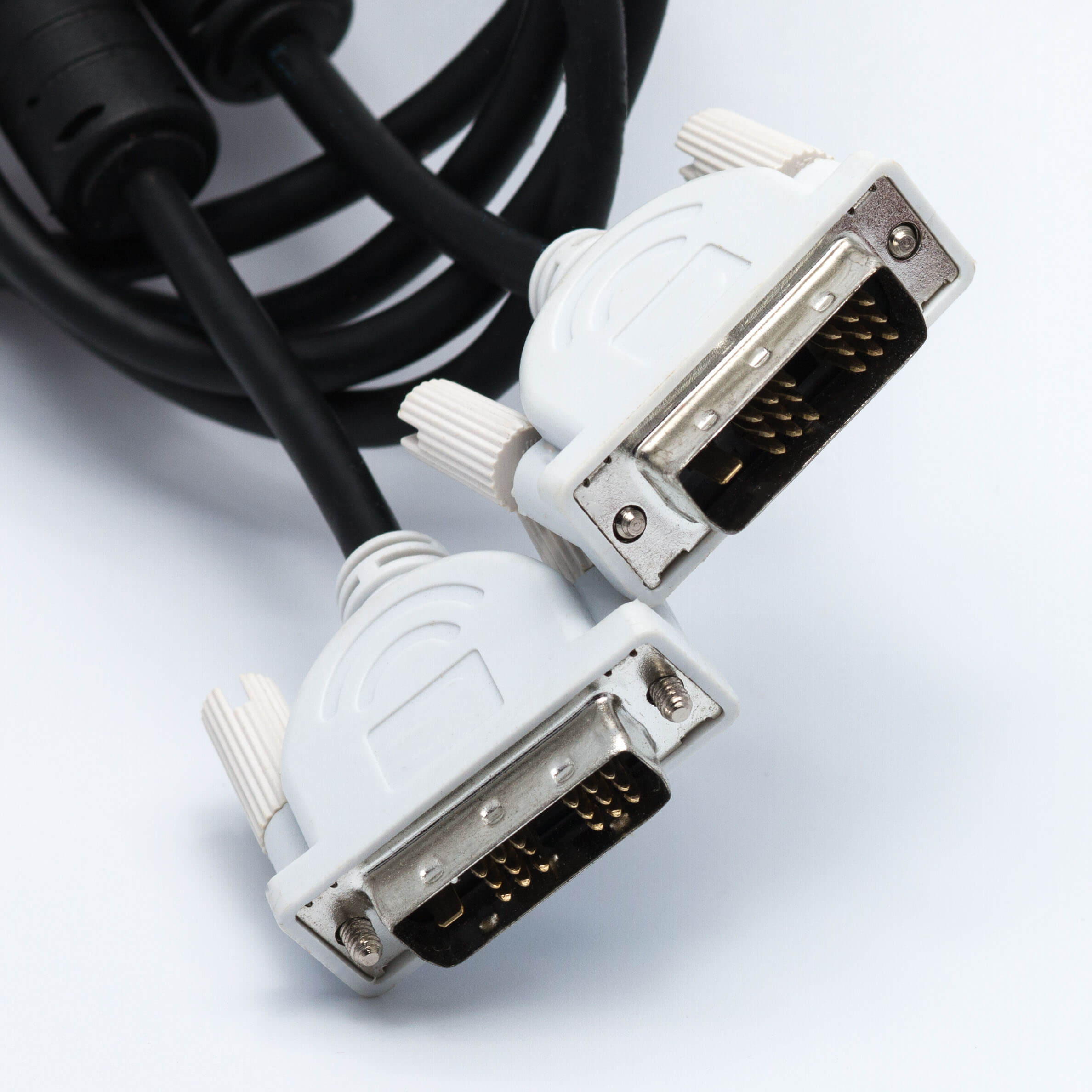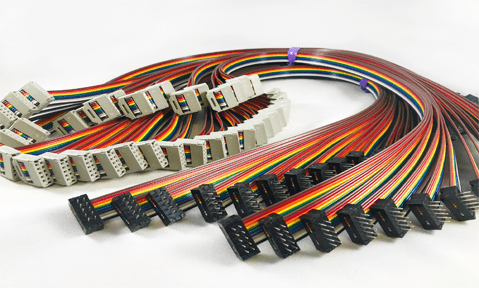Introduction
The Digital Visual Interface (DVI) port has been instrumental in the advancement of display technology, facilitating the shift from analog to digital video connections in computers and various devices. Launched in 1999 by the Digital Display Working Group (DDWG), DVI rapidly established itself as a prevalent standard for linking computers to monitors, projectors, and televisions. Although newer technologies such as HDMI and DisplayPort have since emerged, DVI retains its significance due to its adaptability, providing both digital and analog support, and serving as a bridge between older VGA systems and modern digital displays.
This article delves into the history, technology, variations, benefits, drawbacks, and future prospects of DVI ports, analyzing the reasons behind its establishment as a vital standard and its ongoing relevance in specific applications within today’s digital environment.
1. The History of DVI: Bridging Analog and Digital Worlds

1. The Necessity for a New Standard
In the late 1990s, the transition from analog to digital technology in computer displays became increasingly urgent. Analog connections, such as VGA (Video Graphics Array), which had dominated the market for over a decade, were proving insufficient for the new high-resolution and high-refresh-rate displays being developed. As computer monitors advanced, providing enhanced image quality, color depth, and resolution, there arose a significant demand for a display standard capable of accommodating these evolving requirements.
This led to the creation of DVI, developed by the Digital Display Working Group (DDWG), which included prominent industry figures such as Intel, IBM, HP, NEC, and Silicon Image. DVI was engineered to deliver a digital solution that could support high-resolution displays while ensuring backward compatibility with the existing VGA standard, facilitating a smoother transition between the two technologies.
2. The Launch of DVI
DVI was officially launched in 1999 and rapidly gained traction due to its capability to support both digital (DVI-D) and analog (DVI-A) signals. This dual functionality provided a versatile option for users during a period when many were still moving from analog CRT monitors to digital LCD screens. DVI facilitated this transition by enabling users to connect to both display types through a single interface, establishing it as a universal solution in the late 1990s and early 2000s.
As the first widely embraced digital video standard, DVI set the stage for subsequent technologies such as HDMI and DisplayPort, which would enhance digital video transmission further. Nevertheless, DVI’s ability to support both analog and digital signals allowed it to maintain its relevance across various applications long after the introduction of these newer standards.
2. DVI Port Technology and Types

1. Understanding the Fundamental Structure of DVI
The DVI port is characterized by either a 24-pin or 29-pin connector, depending on the type of signal it is designed to transmit. It is capable of carrying digital, analog, or a combination of both signals, which enhances its utility across various applications. DVI cables come in several configurations based on whether they transmit digital, analog, or both signal types. The three main categories of DVI connectors include:
DVI-D (Digital Only): This variant exclusively supports digital signals, making it suitable for connecting contemporary digital displays such as LCD monitors and projectors. It is not compatible with analog displays like CRT monitors.
DVI-A (Analog Only): DVI-A is intended for transmitting analog signals and is primarily utilized for connecting older analog displays, including CRT monitors. It provides backward compatibility with VGA but is restricted to analog connections.
DVI-I (Integrated Digital and Analog): DVI-I is the most adaptable of the three, as it supports both digital and analog signals. This feature is beneficial for users who need to connect both older analog monitors and newer digital displays to a single system.
2. Single-Link versus Dual-Link DVI
DVI connectors can be categorized into single-link or dual-link configurations, which influence the bandwidth and maximum resolution that the connection can support.
Single-Link DVI: A single-link DVI cable employs 12 pins for data transmission, allowing for a maximum resolution of 1920×1200 at 60Hz. This capability is adequate for most standard-resolution displays, making it a favored choice for routine computing tasks.
Dual-Link DVI: Dual-link DVI incorporates an additional set of pins, which increases bandwidth and enables support for resolutions up to 2560×1600 at 60Hz. This configuration is essential for high-resolution monitors, including WQXGA displays or multi-monitor setups that demand greater bandwidth for optimal performance.
3. Analog Compatibility: DVI and VGA
A notable characteristic of DVI is its backward compatibility with VGA. By utilizing a simple adapter, users can connect DVI outputs to VGA inputs.
3. Key Features and Benefits of DVI

1. Digital Signal Quality
A primary benefit of DVI is its capability to transmit uncompressed digital video signals directly from a computer to a display. In contrast to VGA, which relies on analog signals that may deteriorate over distance or due to interference, DVI preserves the integrity of the digital signal, resulting in a sharp and clear image without any quality loss. This feature is particularly crucial for high-resolution displays, where any signal degradation can become more apparent.
2. Backward Compatibility
DVI’s compatibility with VGA enabled users to retain their existing monitors while upgrading their computers to newer digital technologies. This flexibility was a significant advantage in the early 2000s, a period when many businesses and consumers were still utilizing CRT monitors but sought to benefit from the advantages of digital video transmission.
3. Support for High Resolutions and Refresh Rates
DVI’s capability to support high resolutions and refresh rates made it an excellent option for graphic designers, video editors, and gamers. With dual-link DVI, users could achieve resolutions of up to 2560×1600, which was essential for professional applications that demanded high-quality images and seamless performance. For gamers, DVI’s support for elevated refresh rates facilitated smoother gameplay, minimizing issues such as screen tearing and stuttering. While newer standards like HDMI 2.1 and DisplayPort 1.4 now provide even greater performance, DVI represented a significant advancement at the time of its launch.
4. Wide Adoption in Professional Environments
Thanks to its versatility and performance, DVI became the standard for connecting high-end workstations to professional-grade monitors in areas such as graphic design, 3D modeling, and video production. Its ability to support both digital and analog displays made it a preferred solution for organizations transitioning from older to newer display technologies.
4. DVI vs. Other Modern Display Standards
1. DVI vs. HDMI
HDMI (High-Definition Multimedia Interface) and DVI share similarities in transmitting digital video signals; however, HDMI offers the additional benefit of audio transmission alongside video. Furthermore, HDMI accommodates advanced technologies such as HDR (High Dynamic Range) and CEC (Consumer Electronics Control), establishing it as the preferred choice for consumer electronics, including televisions and home entertainment systems.
Conversely, DVI remains valuable in professional environments where audio is handled separately, and the focus is on high-resolution and high-refresh-rate video. Additionally, DVI features locking screws that provide a secure connection, a feature that HDMI does not possess.
2. DVI vs. DisplayPort
Since its introduction in 2006, DisplayPort has presented numerous advantages over DVI, such as higher data transfer rates, the capability to support multiple monitors via Multi-Stream Transport (MST), and compatibility with 8K resolutions and HDR content. DisplayPort also offers greater versatility with adapters, facilitating seamless conversion to HDMI, DVI, and VGA.
Nevertheless, DVI retains a competitive advantage in older professional settings, where its analog compatibility and straightforward design facilitate easier integration with existing systems.
3. DVI vs. VGA
In comparison to VGA, DVI delivers enhanced image quality through its digital signal transmission, supporting higher resolutions and faster refresh rates. Although VGA continues to be utilized in legacy systems, DVI represents a more contemporary and proficient standard, particularly for users aiming to engage with high-resolution displays or dual-monitor configurations. Moreover, DVI’s backward compatibility with VGA renders it a more suitable choice for users transitioning from older analog displays to digital formats.
5. Limitations of DVI
1. Insufficient Audio Capabilities
A significant drawback of DVI in comparison to HDMI is its inability to support audio transmission. HDMI is capable of carrying both video and audio signals through a single cable, whereas DVI is restricted to video alone, necessitating an additional connection for audio. This limitation renders DVI less practical for home entertainment systems and consumer electronics, where HDMI has established itself as the preferred standard.
2. Restricted Compatibility with Advanced Features
With the advancement of technology, DVI has lagged behind more modern standards such as HDMI and DisplayPort regarding the features it supports. DVI does not accommodate HDR, 4K resolution (without dual-link), or adaptive sync technologies, which are increasingly important in contemporary displays.






